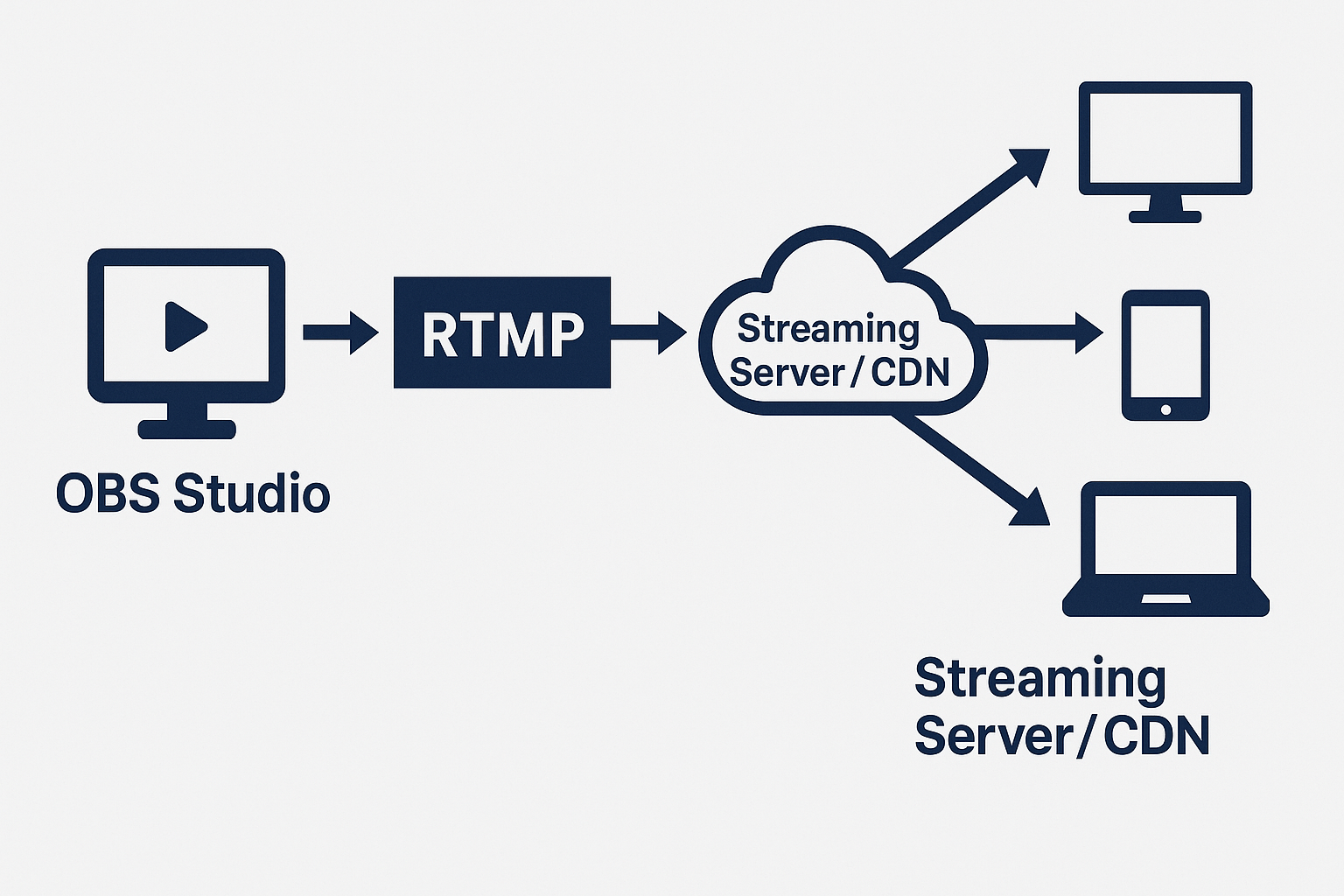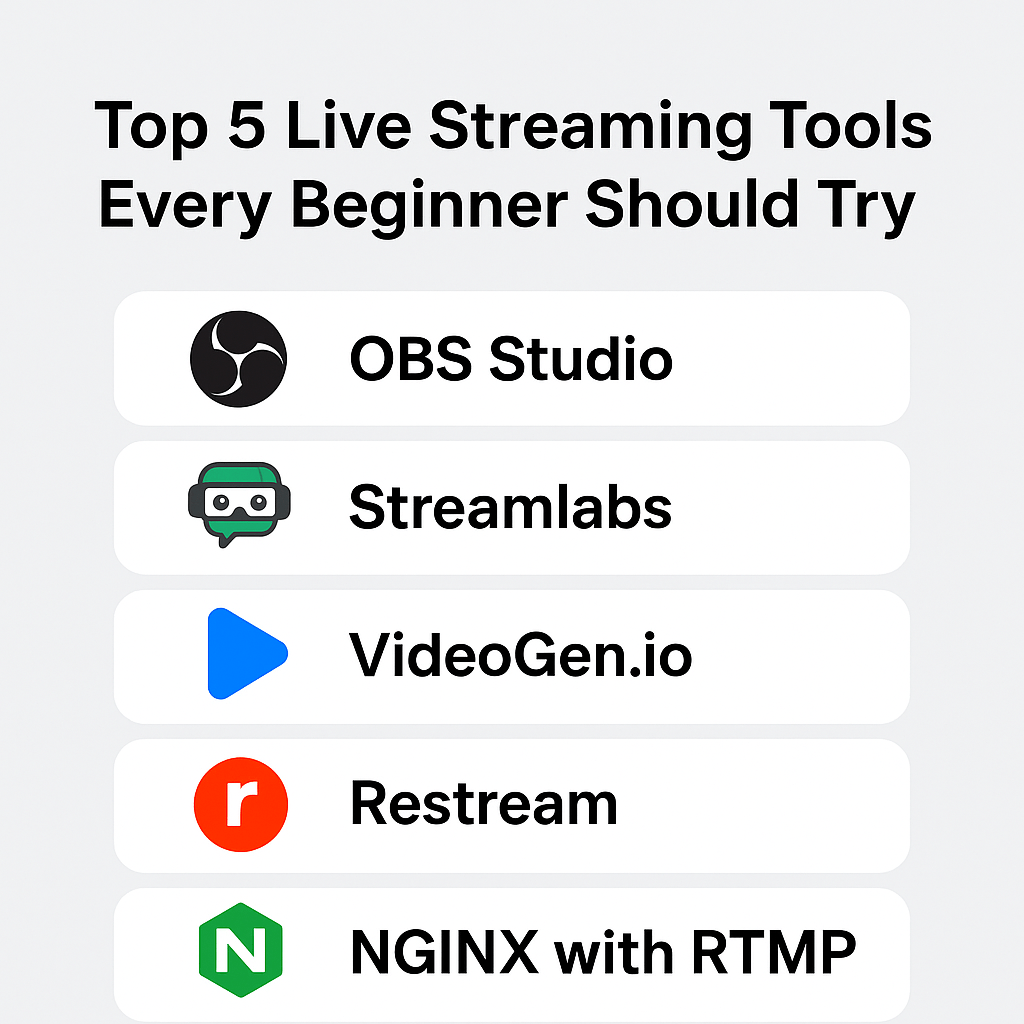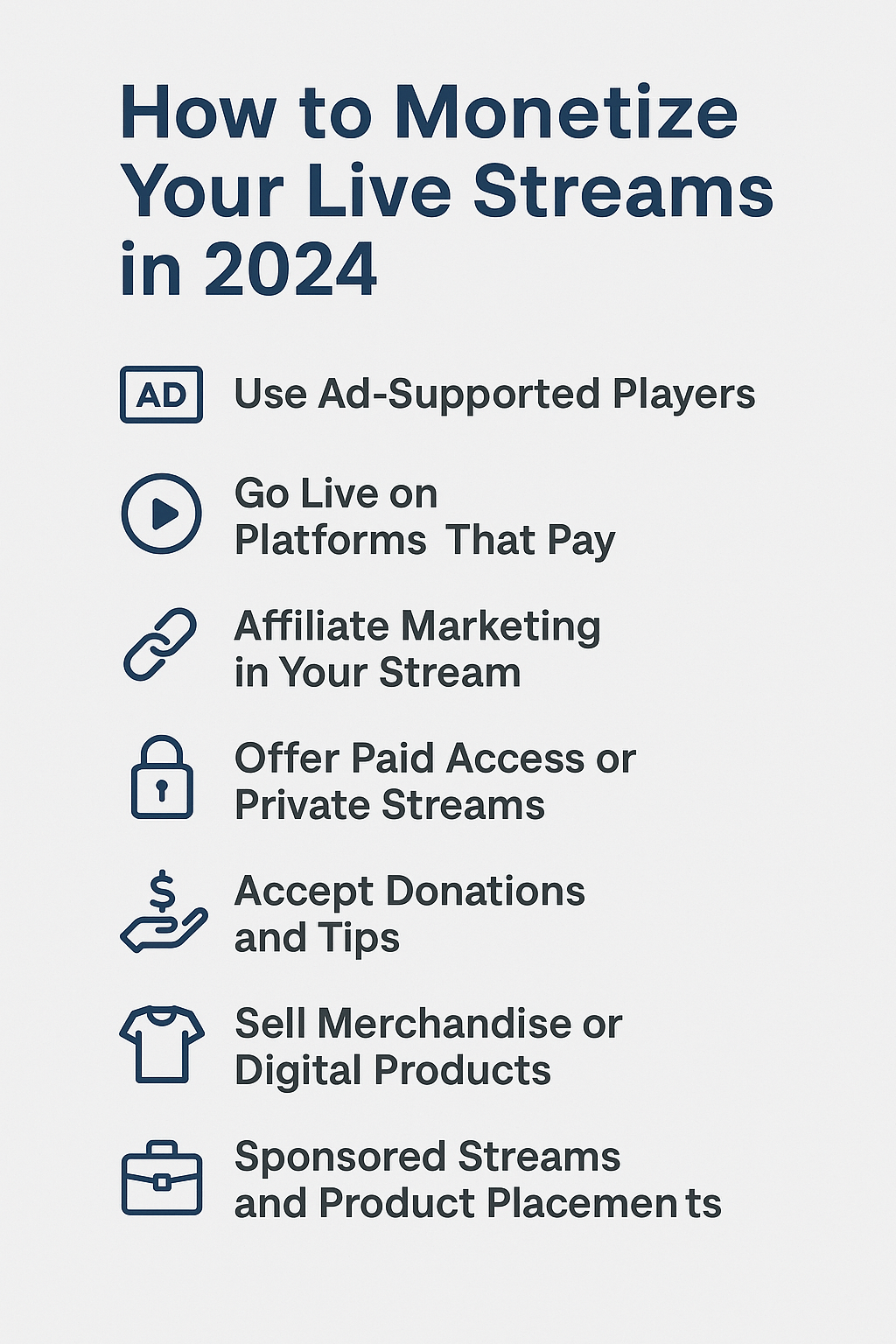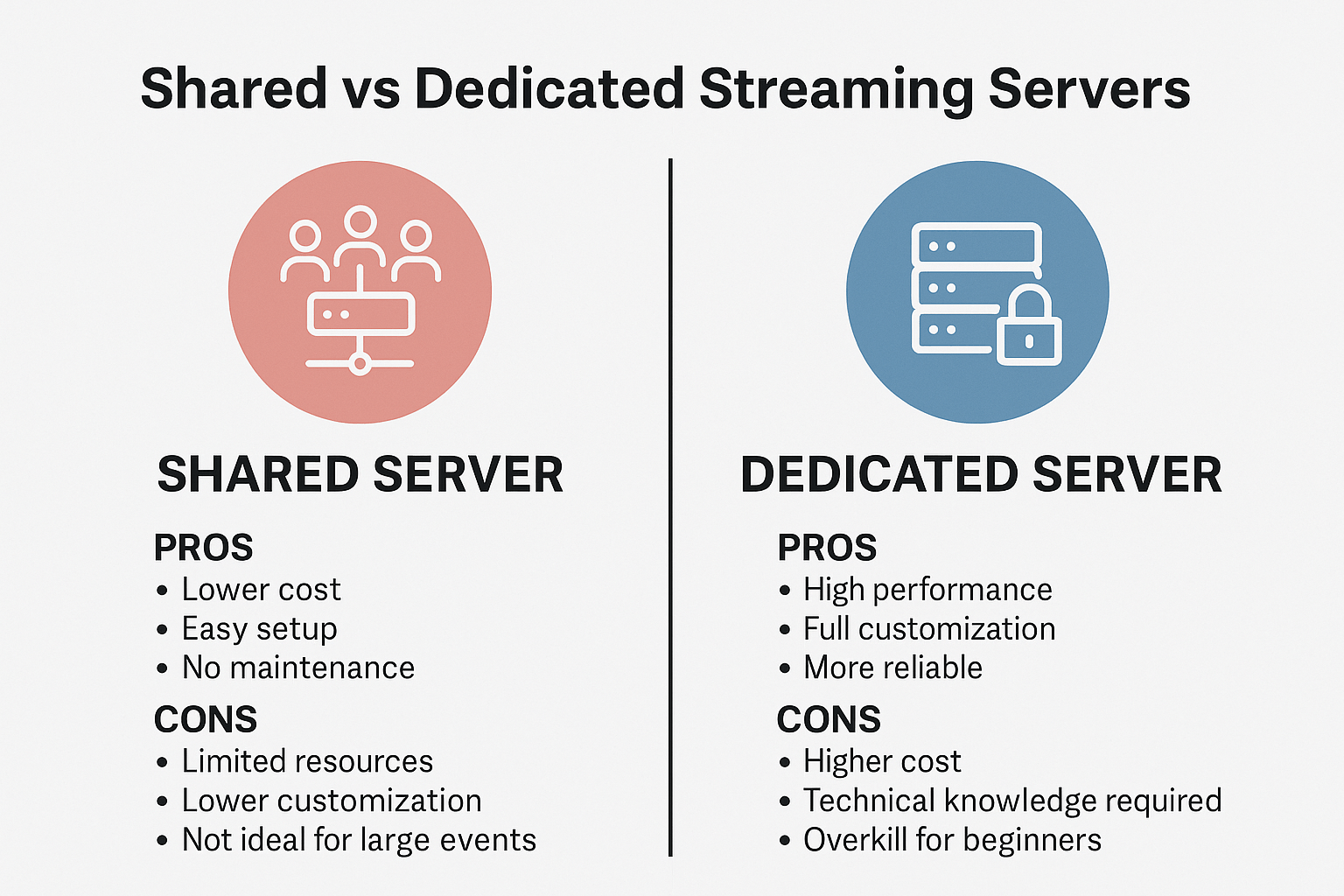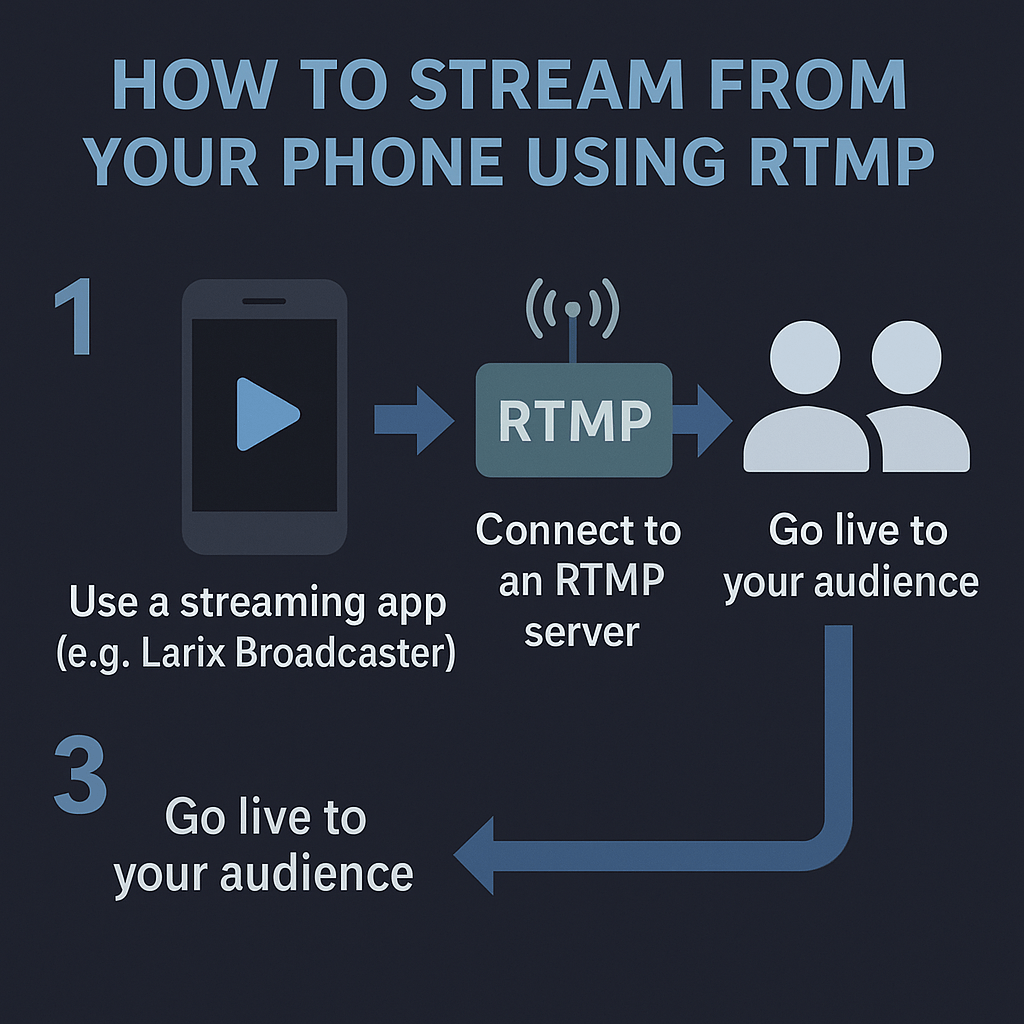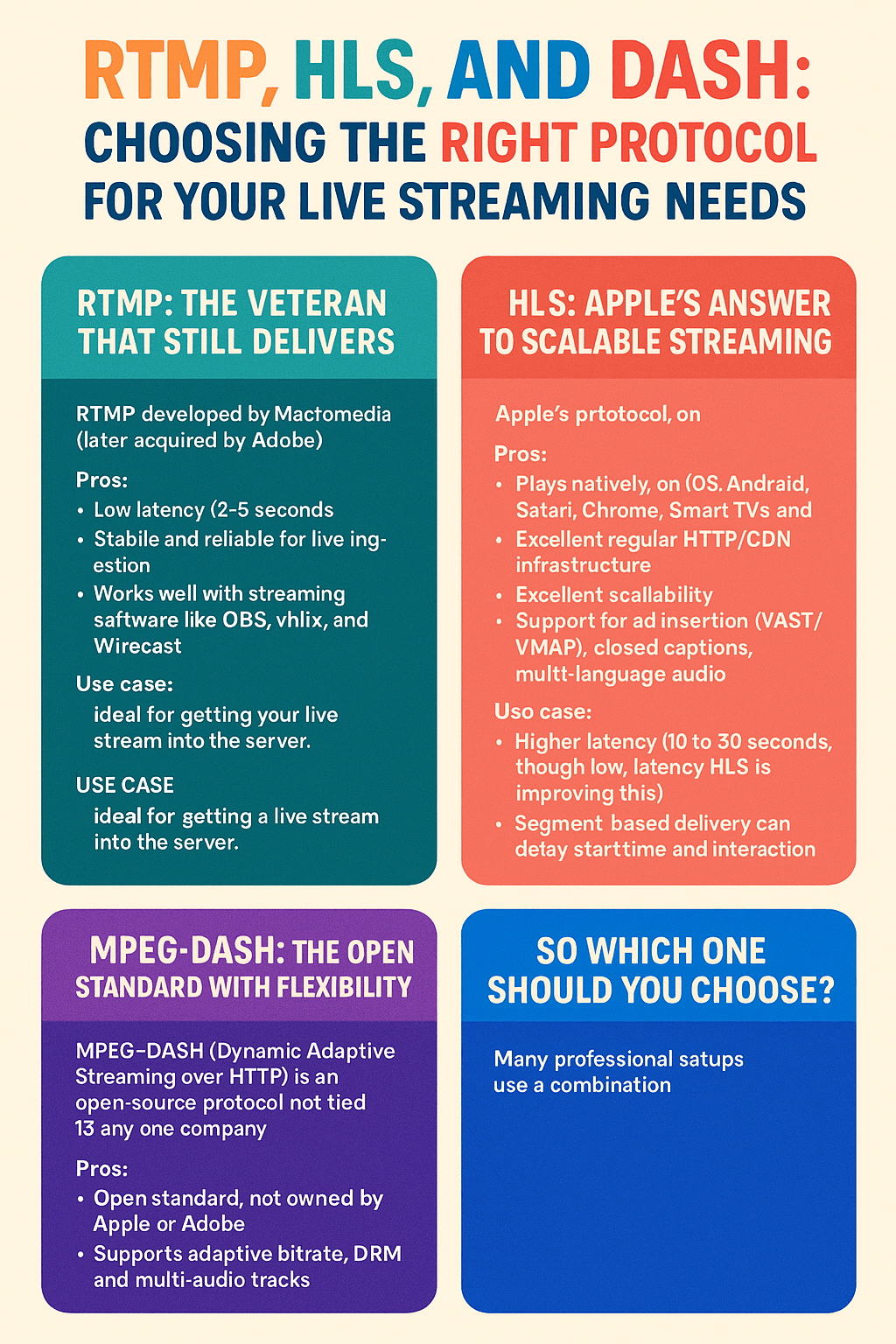Live streaming today is a fast-moving, crowded field, but at the core of it all sits a technology that’s been around for more than two decades: RTMP. If you’ve ever streamed with OBS Studio, watched a live event online, or managed your own broadcast setup, chances are you’ve used RTMP whether you realized it or not.
I remember the first time I messed with RTMP. I was trying to get a basic stream running on a shared server, and I kept seeing this mysterious “rtmp://” address in the settings. It felt technical and outdated, but as soon as I hit “Start Streaming” in OBS and saw the feed come alive, I got it. RTMP may be old, but it still works beautifully.
So, let’s break it down. What is RTMP, and why is it still such a big deal in the world of live streaming?
What RTMP Actually Is
RTMP stands for Real-Time Messaging Protocol. It was originally created by Macromedia to deliver audio and video content through Flash Player. Later, Adobe bought Macromedia and took over the development of RTMP. At the time, it was a brilliant solution. Flash was everywhere, and RTMP allowed people to stream live video over the internet in a way that felt smooth and fast.
RTMP is a protocol that’s designed to keep a constant connection between the encoder (your streaming software or device) and the server that sends the content to viewers. This constant connection helps reduce latency and makes the stream feel more “live.”
In technical terms, it works over TCP and usually runs through port 1935. But you don’t need to know all the nitty-gritty to use it. The point is, it creates a two-way street for data to move quickly and stay in sync, especially video and audio.
Why RTMP Took Off
The timing was perfect. In the early 2000s, everyone was using Flash. YouTube ran on Flash. Most live video platforms did too. RTMP made it possible for broadcasters to go live without fancy equipment. You just needed a camera, a basic encoder, and a server that could handle RTMP.
Even after Flash started to die out, RTMP stayed alive. Platforms like YouTube, Facebook Live, and Twitch all continued to accept RTMP as an ingest protocol. That means streamers could push their live feed to these platforms using RTMP, even if the viewers were watching through newer formats like HLS or DASH.
This is something many people don’t realize. Even now, when someone streams to YouTube using OBS, they’re likely sending the video to YouTube’s servers over RTMP. YouTube then converts that feed into formats that are easier to view on different devices.
The Streaming Software and Servers That Love RTMP
OBS Studio is probably the most popular streaming software out there, and RTMP is its default method for pushing video to a server. It’s easy to set up: enter the RTMP URL, copy your stream key, and go live. Streamlabs, XSplit, and even mobile apps also support RTMP without any special configuration.
On the server side, you’ve got options like Wowza, NGINX with the RTMP module, and Red5. These servers are often used by businesses or individuals who want more control over their stream, or who want to set up a private streaming environment. Some hosting companies, like the one I run, offer shared or dedicated RTMP server packages for people who want a turnkey solution.
The reason these tools still use RTMP is because it’s battle-tested. It works. It’s reliable. And for most people, it gets the job done without requiring a complicated setup.
RTMP in the Modern Streaming Workflow
These days, most viewers aren’t watching streams through Flash anymore. They’re watching through HTML5 players, and the video comes to them using newer protocols like HLS. But RTMP hasn’t been replaced — it’s been repositioned.
Think of it like this: RTMP is the delivery van that picks up the content at your house. HLS is the truck that takes it to everyone else around the world. RTMP gets the stream from your computer to the server quickly and efficiently, and then the server takes over and distributes the stream using whatever method is best for each viewer.
This is especially useful in situations where latency matters. For example, sports broadcasts, live auctions, or interactive events need as little delay as possible. RTMP is still one of the best ways to achieve that.
Why RTMP Still Matters
I’ve had clients ask me, “Why are we still using this old protocol?” The answer is simple: it works, and it integrates with everything.
RTMP is stable, well-supported, and efficient. It’s still the preferred ingest method for most live streaming platforms. It lets you use simple tools like OBS or even hardware encoders and connect directly to your streaming server or platform.
It also doesn’t require a CDN or advanced infrastructure to get started. You can run a basic RTMP server on a VPS, or even a dedicated machine in your home if you want. If you’re streaming to a small audience or running an internal event, that flexibility is hard to beat.
RTMP and Monetization
Another reason RTMP remains important is because it’s compatible with monetization tools. If you’re streaming through a platform that supports VAST or VMAP ad tags — like Wowza, for example — RTMP feeds can easily be integrated into those systems. That means you can earn money from your content without changing the core setup.
This makes RTMP especially useful for affiliate marketers, niche broadcasters, online educators, and small media companies. You don’t need to reinvent the wheel. You just need a solid setup and a reliable RTMP connection.
Wrapping Up
RTMP isn’t flashy. It’s not the newest tech on the block. But in the live streaming world, it’s still a workhorse. It’s the backbone of many broadcast setups, and it’s not going away anytime soon.
If you’re starting a streaming channel, launching a tutorial site, or promoting affiliate tools related to live video, RTMP should be part of your strategy. It’s simple, dependable, and widely supported.
So don’t let the age of the protocol fool you. RTMP is still very much alive — and for good reason.


